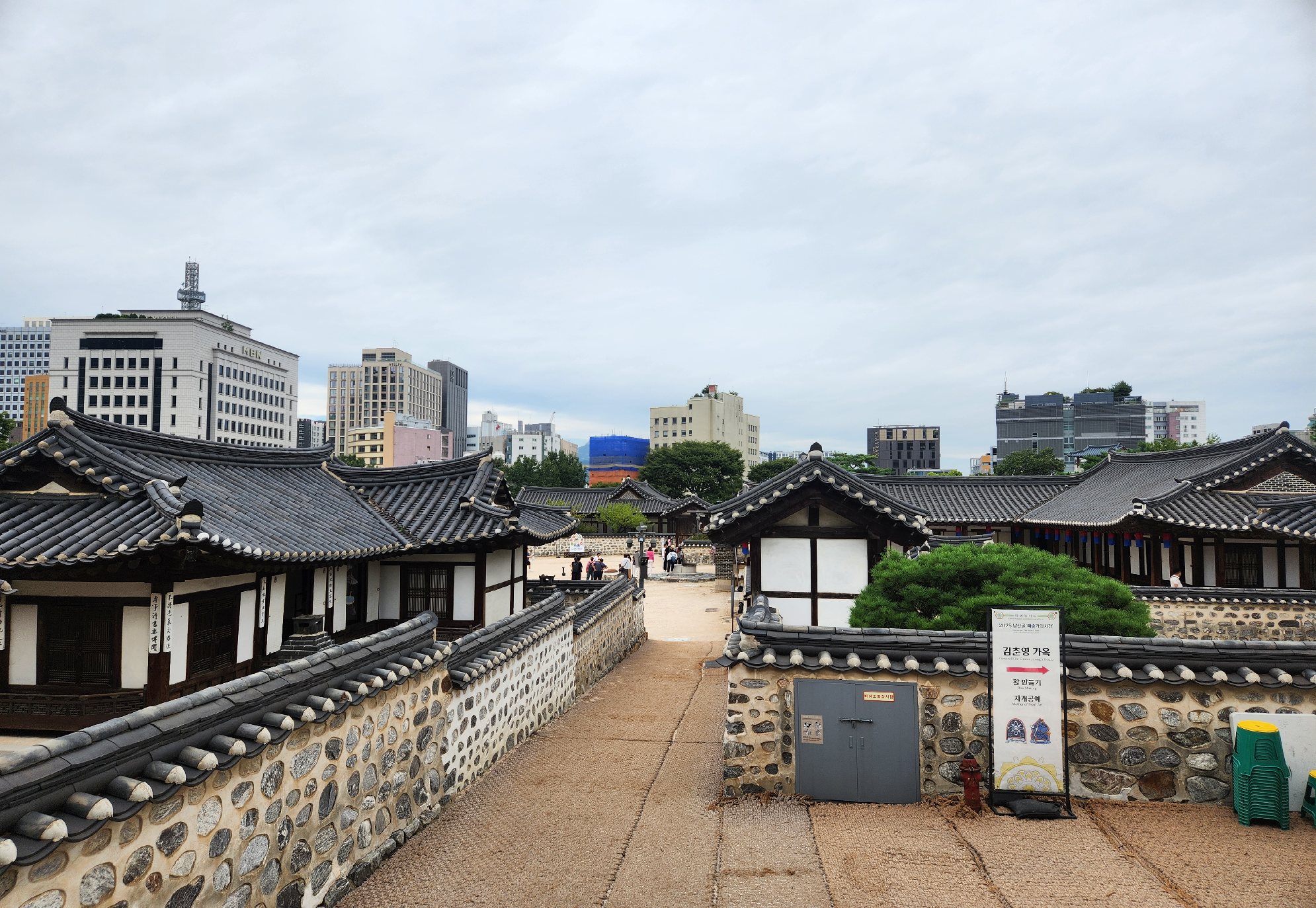[Feature] The Climate Crisis at Our Doorstep
“The hottest year in 113 years, the snowiest year in 117 years” — this is how the Korea Meteorological Administration (KMA) described last year’s climate. In 2024, South Korea experienced unprecedented effects of climate change record-breaking climate abnormalities. Beyond erratic weather, these extreme conditions have significantly affected people’s lives, damaging various facilities, causing health problems, and shaking the economy. Given this reality, proper preparation for the future effects of climate change appears to be a necessity.
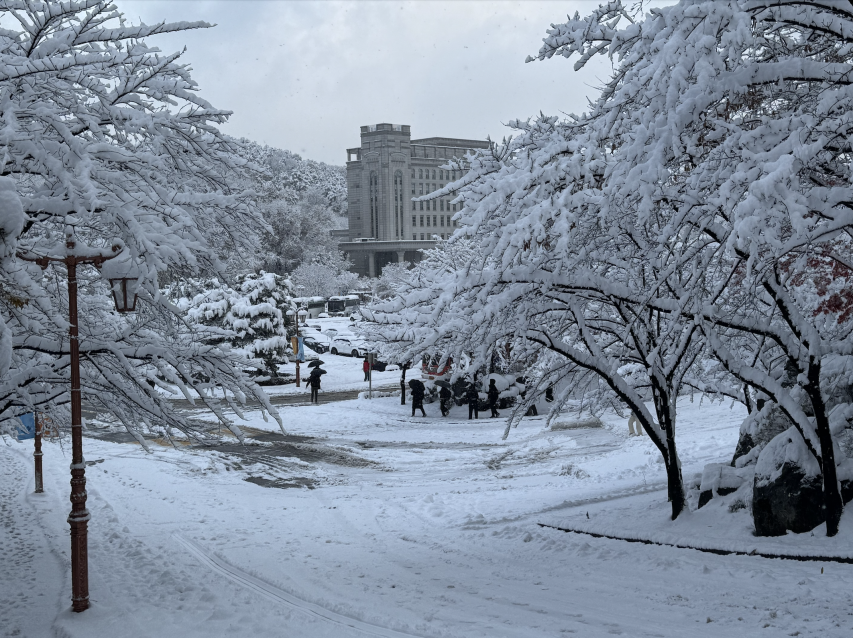
Heavy snowfall on Global Campus on November 27, 2024
2024, Ever-recorded Heat Wave and Snowfall
According to the KMA’s 2024 Annual Climate Characteristics, several records indicate extreme heat. The average temperature in 2024 was 14.5 celsius (°C), 2°C higher than the annual average. This surpasses the previous second-highest record of 13.7°C. Moreover, the number of tropical nights—when the lowest temperature of the night is over 25°C—reached 24.5 days, 3.7 times higher than the annual average of 6.6 days.
Snowfall was also unprecedented. According to KMA's statistical analysis, the daily maximum depth of snowfall (MDOS) in Seoul on November 27 centimeter (cm) reached 19.5 cm, more than double the previous record of 9.5 cm. On the same day, Suwon recorded 32.3 cm for MDOS, surpassing the previous highest record of 14.1 cm.
The Warming Ocean Starts the New Phase of Climate
KMA pointed out that the rising sea surface temperatures (SST) in the Pacific Ocean, Indian Ocean, and the West Sea were the main causes of climate abnormalities. If SST increases, convective activity—where warm air rises and cold air sinks—becomes more vibrant. As a result, a large mass of hot air has formed.
Photo: ThoughCo (thoughtco.com)
As the SST of the three oceans rose above average, large hot air masses—the Tibetan High and the North Pacific High—developed strongly due to ever-active convection. These hot air masses, the main drivers of heat waves in South Korea, then expanded over the country. Notably, they converged over the skies simultaneously, further exacerbating the heat wave.
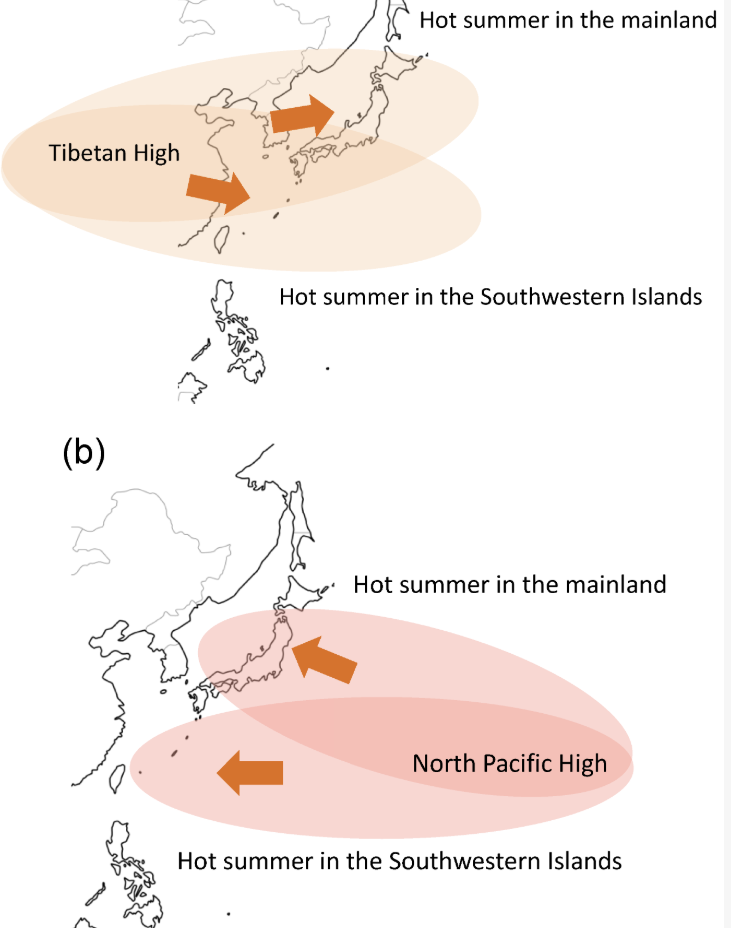
How the Tibetan High and North Pacific High affect the land
Photo: MDPI (mdpi.com)
The sudden heavy snowfall in November last year was also related to the rise in SST. As winter approached, an air mass carrying cold Arctic air flowed into the country. During this period, the cold air mass encountered the unusually high SST of the ocean, forming more snow clouds. The KMA explained that this ultimately resulted in the heavy snowfall.
Kim Hae-dong, a professor at Keimyung University, explained that climate abnormalities might not be an immediate occurrence. He said, "As greenhouse gases accumulate in the Earth's atmosphere, heat cannot escape easily. Under these conditions, the ocean absorbs 90% of the heat, consequently causing a rise in SST worldwide." This indicates that unusual climate patterns may persist unless SST levels change.
Warning of Abnormal Weather: Disrupting Daily Life
The heavy snowfall in November last year caused widespread damage to production facilities. According to the Gyeonggi Province Heavy Snowfall Recovery and Support Status Report, the Provincial Government reported that approximately 650.6 hectares (ha) of vinyl greenhouses and 385.7 ha of croplands were damaged. Moreover, 2,630 agricultural and forestry facilities were destroyed.
In addition to the agricultural sector, the livestock industry and business owners also suffered significant losses. The total damage caused by the heavy snowfall was estimated at 391.9 billion won.
This snowfall has also affected the university campus. For example, at Kyung Hee University's Global Campus, the snowfall prompted a change in the General Student Association election method from offline to online. At 12:56 p.m. on November 26, the Global Campus Central Election Committee sent a message to all students, stating, "Safety concerns due to heavy snowfall have been raised. Therefore, the voting method has been changed from in-person electronic voting to non-face-to-face electronic voting."
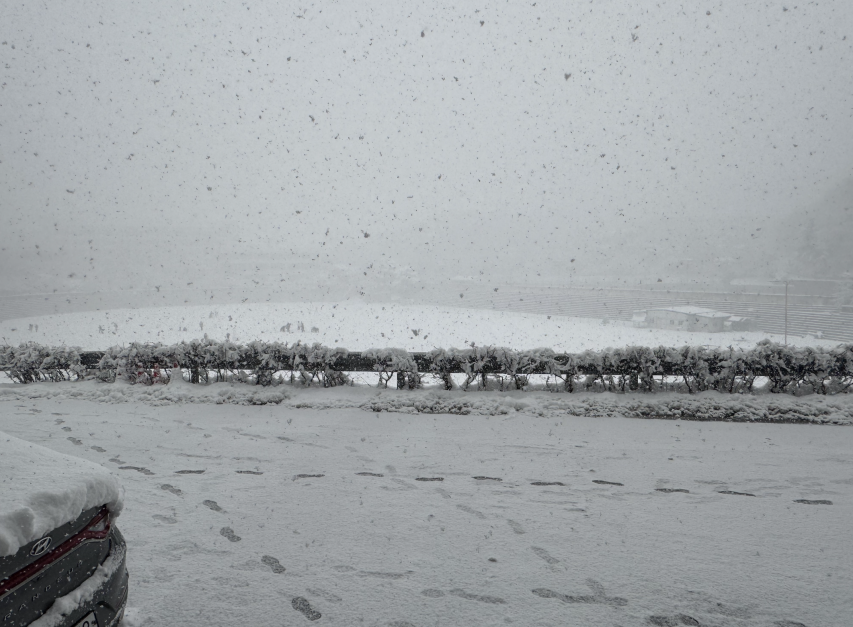
Heavy snowfall at KHU, in front of the 2nd Dormitory
Other universities have also encountered similar situations. On November 28, Seoul National University issued an announcement stating, “Some tree branches have broken off because of the snow’s weight, and we are restricting access to certain walkways for safety.” Similarly, Dankook University canceled all classes on November 28 and 29 due to concerns about potential accidents caused by heavy snowfall.
Additionally, this year's heat wave poses a serious health threat. According to the Korea Disease Control and Prevention Agency, the number of heat-related illnesses in 2024 reached 3,704, marking a 31.4% increase from last year's 2,818 cases. Heat-related illnesses occur when a person is exposed to high temperatures for an extended period. These include heatstroke, heat exhaustion, heat cramps, heat syncope, and heat edema. Common symptoms are headache, dizziness, muscle cramps, fatigue, and decreased consciousness, and in severe cases, they can be fatal. Notably, the number of heat-related deaths this year reached 34, the second highest since 2018.
Sudden climate change has led to a rapid rise in price levels. The term “golden-apple” was widely mentioned in the media during Chuseok last year, referring to apples becoming as expensive as gold. According to the Korea Development Institute (KDI), the price of apples increased by 39.4% in July and 17% in August last year. Meanwhile, the price of pears surged by 154.6% and 120.3% during the same period.
The Bank of Korea targets an annual inflation rate of 2%, which is considered a stable level for economic growth. However, fruit prices have risen far beyond this rate, indicating a significant increase in overall price levels. The KDI explained that a low yield due to climate change, combined with high demand during the national holiday, led to this outcome.
Extremes: How the Future Climate Threatens Society
Prof. Kim explained that weather patterns will become significantly more extreme in the future. He stated, “The rising SST will lead to the more frequent formation of strong hot air masses. In contrast, the increase in global temperature will reduce perennial ice, causing the region to absorb heat that would otherwise be reflected. This will weaken the cold air masses in the Arctic. Under these conditions, hot air is more likely to push further north, displacing parts of the cold air mass southward, resulting in more frequent and sudden cold waves in the future.”
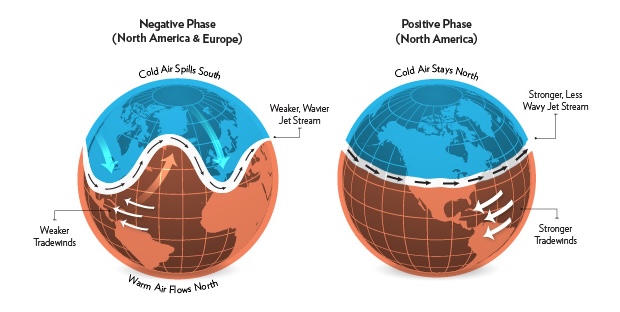
How weather become extreme
Photo: SummitPost (summitpost.org)
Moreover, he added, “Not only do heat and cold waves matter, but precipitation does as well. As the Earth gets warmer, the atmosphere will become more stable, and the evaporation rate will increase. This means rainfall is more likely to occur in concentrated regions, while arid areas will become drier, leading to more floods and droughts.”
As a result, more frequent and sudden climate events seem to pose a growing threat to daily life. Prof. Kim explained that the unpredictable nature of future weather patterns makes it difficult for monitoring systems to accurately forecast extreme weather events. This, in turn, prevents people from responding effectively, ultimately leading to the loss of human life. He warned that densely populated regions like Seoul could be likened to a ticking time bomb.
The Proper Way to Take
In response to future climate challenges, Prof. Kim emphasized the importance of raising awareness. “Higher education in South Korea is primarily focused on core subjects such as Korean, English, and mathematics, leaving students with fewer opportunities to engage with climate issues. Moreover, South Korean media mainly covers international topics, such as IPCC reports, which makes it difficult for citizens to recognize how climate change directly impacts their daily lives. Ultimately, this leads politicians to believe that the public is uninterested in climate issues, prompting them to prioritize legislation in other sectors,” he said.
Gwangju Institute of Science and Technology Climate Analysis and Modeling Laboratory professor Yoon Jin-Ho remarked that policies should be designed to encourage automatic behavioral changes. “The consequences we face stem from high carbon emissions, meaning that reducing them is the solution. However, taking action to contribute to this effort often involves significant inconvenience. Therefore, policies should provide incentives for those who engage in climate-friendly actions. The Climate Card could be one such example, and if similar measures are expanded, we will eventually mitigate the impacts of climate change,” he said.
The tale is now a reality. The record-breaking climate abnormalities of 2024 signal that South Korea is no longer a safe zone from the impacts of climate change. Facilities are destroyed, more people are getting sick, and prices are soaring—these are the consequences that climate change has brought to people’s daily lives. To build a more resilient society, greater public interest, education, and policy development are urgently needed.
- 1
- 2
I agree to the collection of personal information. [view]





